Along the River Derwent in Tasmania’s Glenorchy, Room 11 has built a colourfully calibrated public walkway, deftly linking previously marginalised, surprisingly beautiful sections of foreshore.
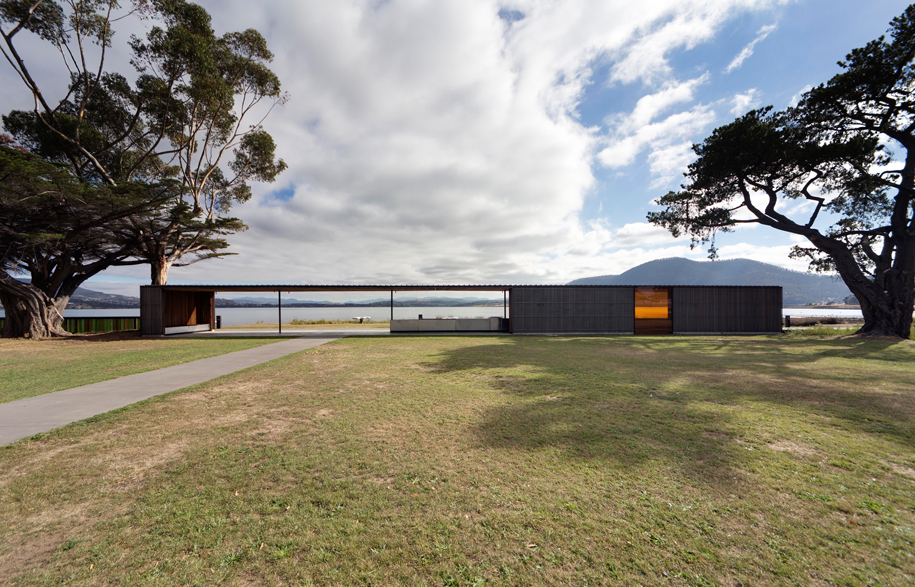

Room 11’s co-founder Thomas Bailey says, “We move on from nostalgic visions of place making and embrace interstitial ‘spaces’ with relish.”
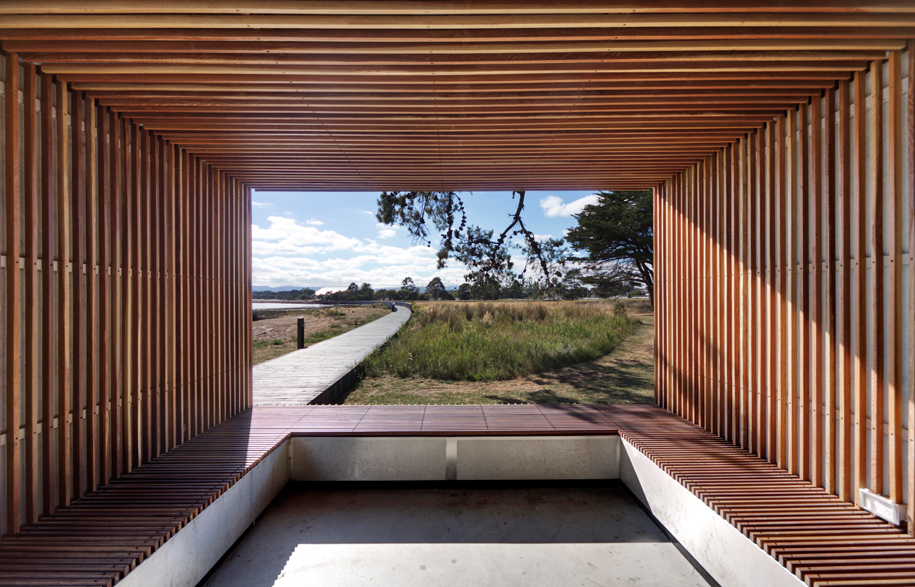
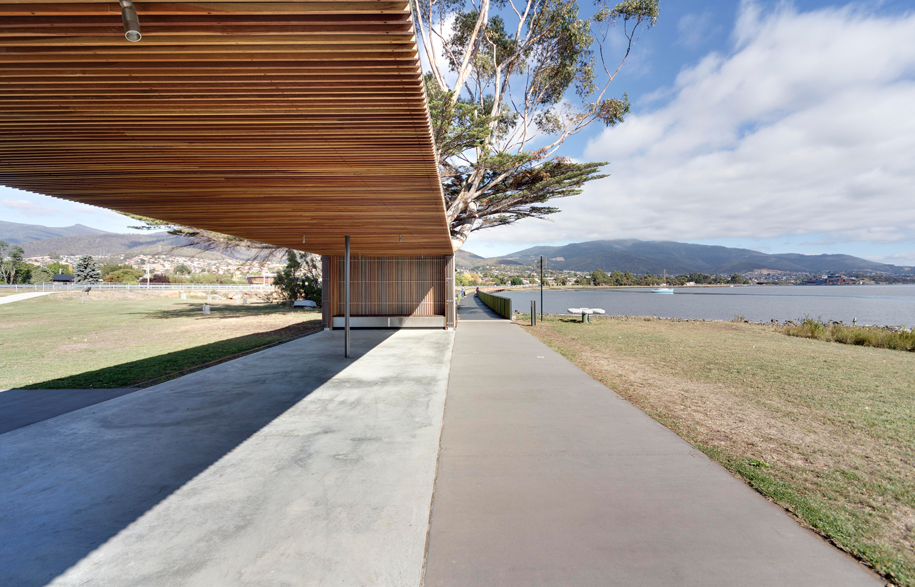
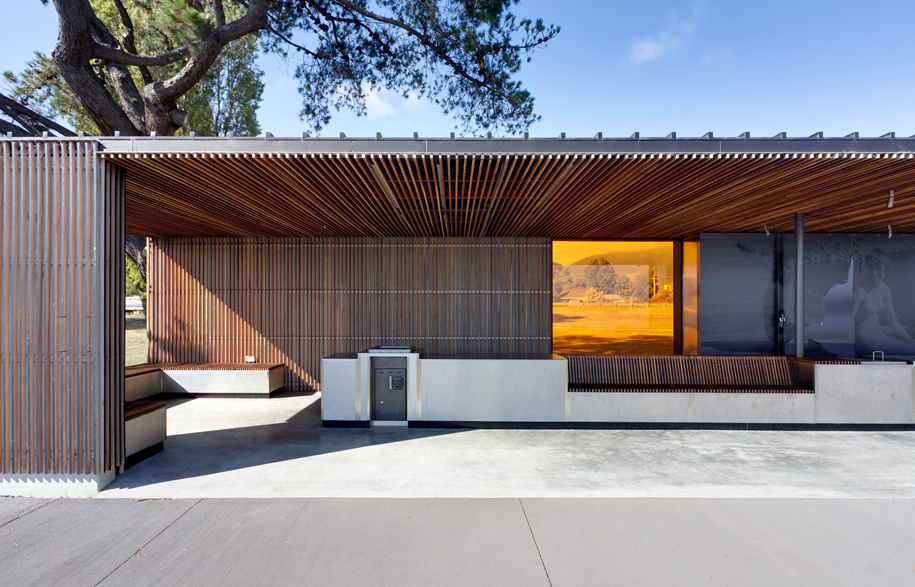

The river’s silky surface and abundant birdlife are able taken in casually as one walks the gentle arc which links a school, playground, major entrainment centre and rowing club.
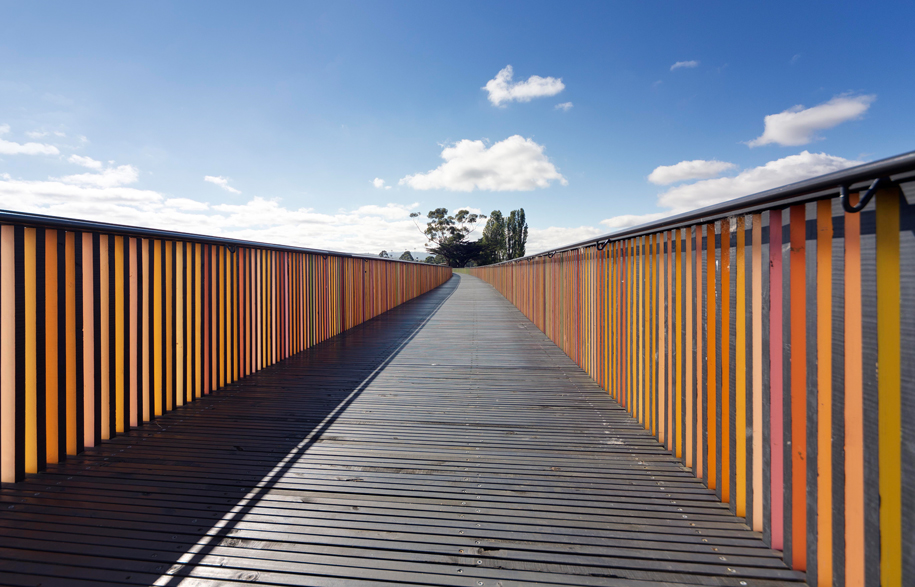
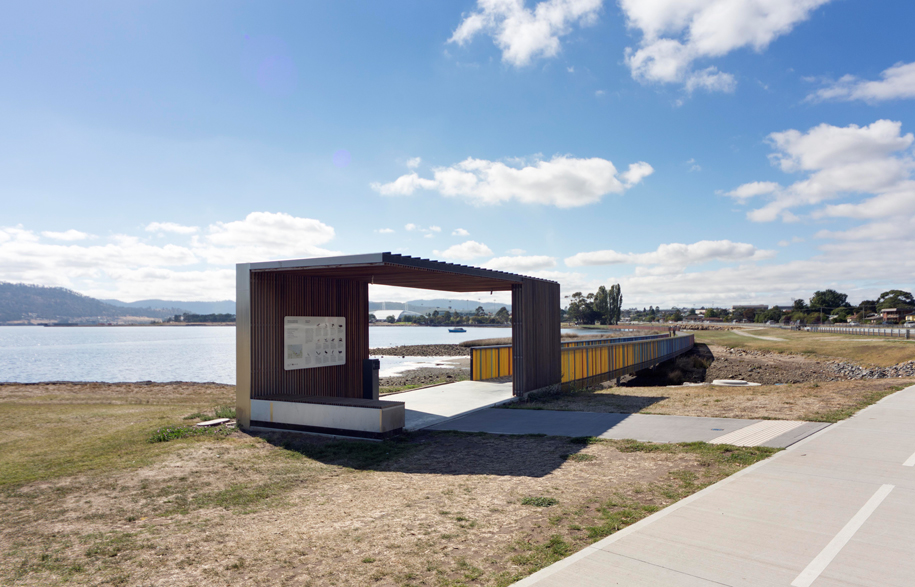
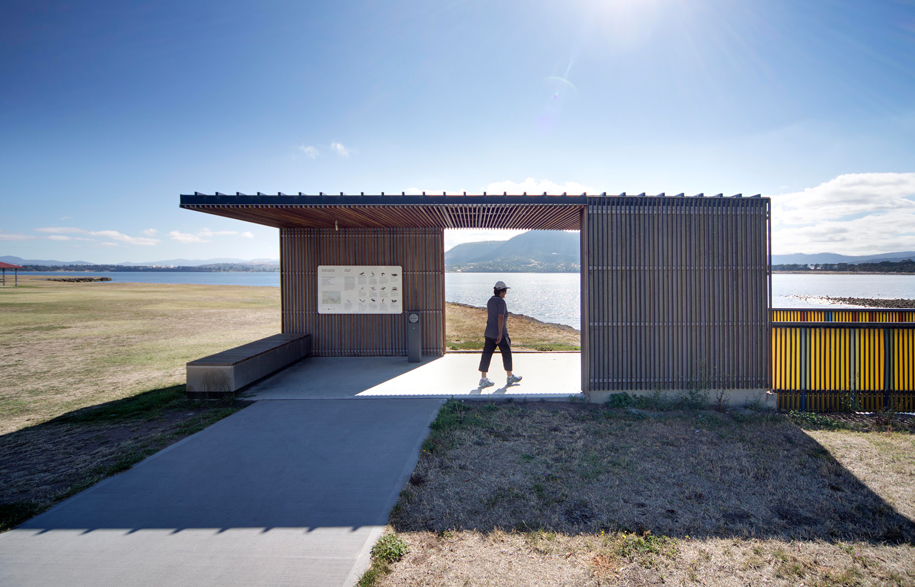
Punctuating the arc are two carefully crafted pavilions, offering shelter, seating and a location to pause and consider the natural beauty of the landscape.
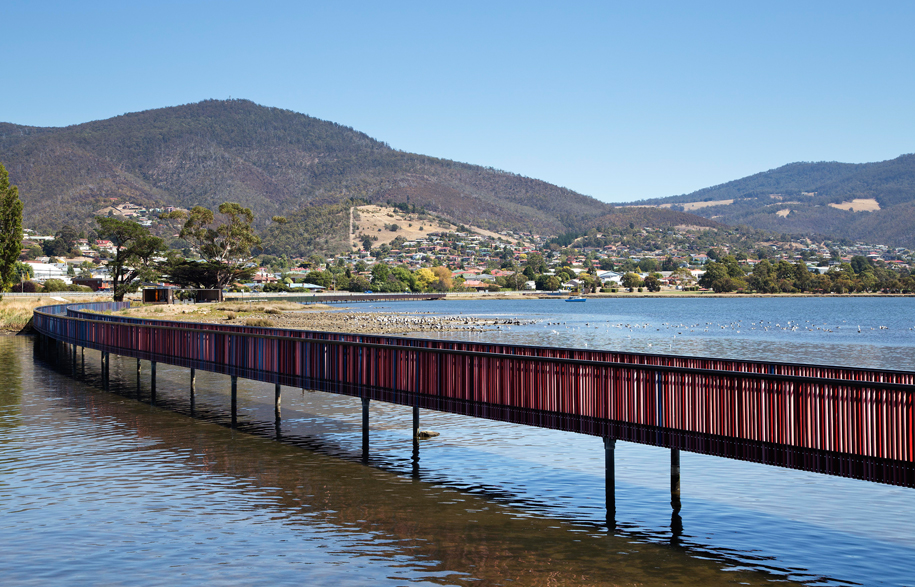
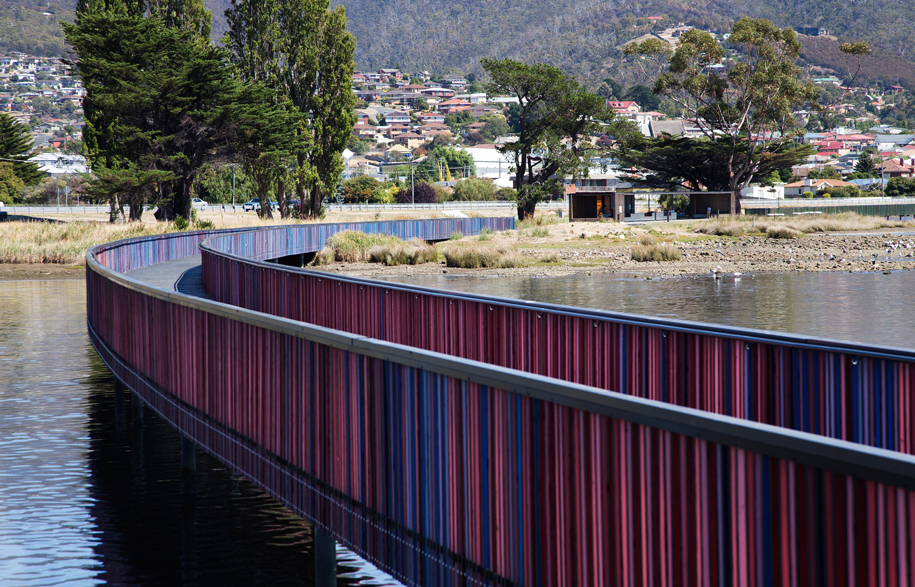
The GASP! project was conceived as a ribbon along which contemporary art events and installations might occur. Turner Prize winning Artist Susan Phillipz was commissioned to undertake the inaugural art project, The Waters Twine.
Room 11
room11.com.au

